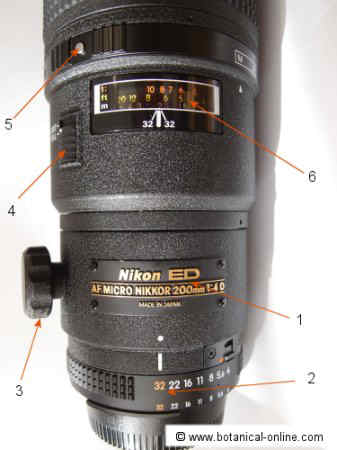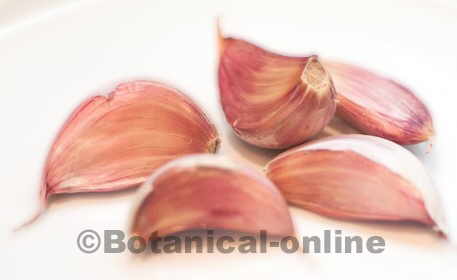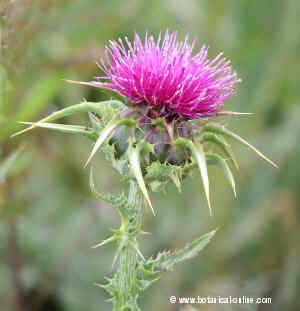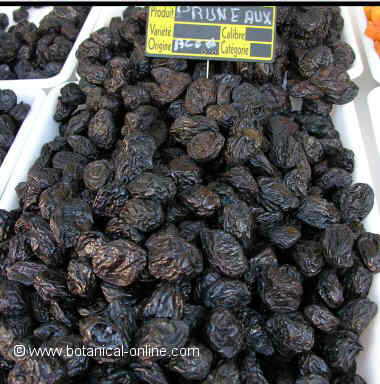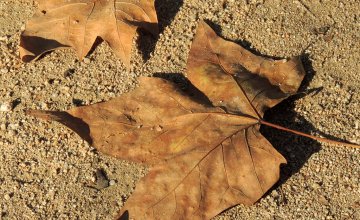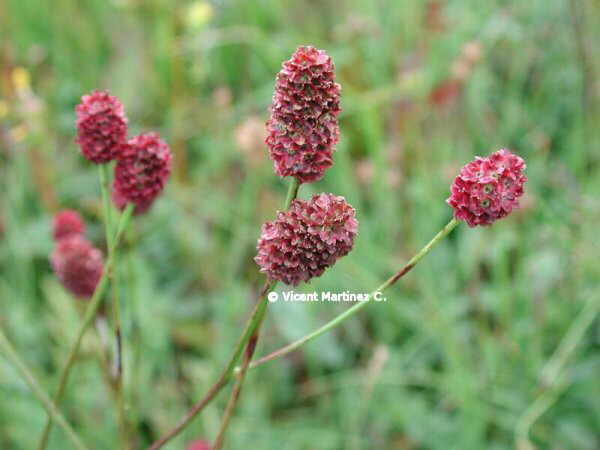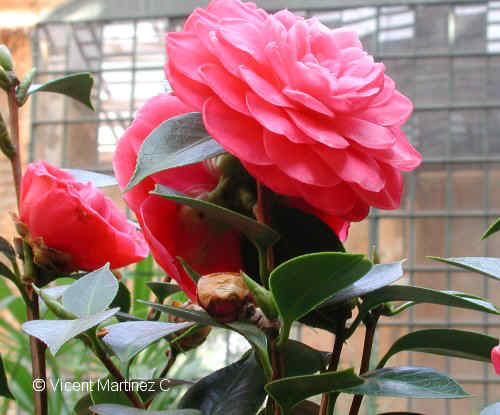Contents
- 1 General characteristics of the AF Micro-Nikkor 200mm f/4 D ED
- 1.1 What are the main features of AF Micro-Nikkor 200mm f/4 D ED
- 1.2 MAIN VIRTUES OF AF MICRO-NIKKOR 200 MM
- 1.3 A good medium telephoto
- 1.4 An excellent macro telephoto
- 1.5 AF Micro-Nikkor 200mm provides one of the best bokehs in the market
- 1.6 AF Micro-Nikkor 200mm for photography of plants
- 1.7 AF Micro-Nikkor 200mm with an excellent quality in construction
- 1.8 AF Micro-Nikkor 200mm with a good tripod ring
- 1.9 MICRO-NIKKOR LENS AF 200mm f / 4 D ED SHORTCOMINGS
- 1.10 It lacks vibration reduction (VR)
- 1.11 It has no internal focus motor
- 1.12 A high quality lens at a very high price
- 1.13 Conclusions
General characteristics of the AF Micro-Nikkor 200mm f/4 D ED
The AF Micro-Nikkor 200mm f / 4 D ED has a fixed focal length of 200 mm. Given the conversion factor of 1.5 of Nikon DX sensors, it can be considered a 350 mm for a 35 mm camera. Therefore, it is a medium telephoto.
This is a very specialized macro lens with a ratio of 1:1 at a minimum close-focusing distance of 50 cm to the sensor, which, in practice, must be fixed at 26 cm from the end of the lens to the subject.
Its design is fairly old (the current model appears in the year 1993). It lacks stabilization, not as most current Nikon lenses, though it is build with a high quality and and enviable robustness.
What are the main features of AF Micro-Nikkor 200mm f/4 D ED
The main characteristics of AF Micro-Nikkor 200mm f / 4 D ED are:
- Length: 193 x 76mm
- Weight: 1190 gr
- Lens: 13 lenses in 8
- Filter Diameter: 62 mm
- Minimum focusing distance: 50 cm (26 cm from the end of the lends in practice)
- Maximum aperture: f/32
- Minimum aperture: f /4 as telephoto, and f/5.3 as macro.
- Autofocus: Yes, no internal motor. Powered from the camera. Front element does not rotate.
- Manual focus: Yes, with a key ring in front. Two positions: M (Manual and Automatic)
- Focus ring: Yes, rubber.
- Limiting focus for nonmacro measurement: Yes, through a key.
- Hood: Nikon HN30 (optional)
- Tripod mount: Yes, nonremovable
- Available Mounts: Nikon
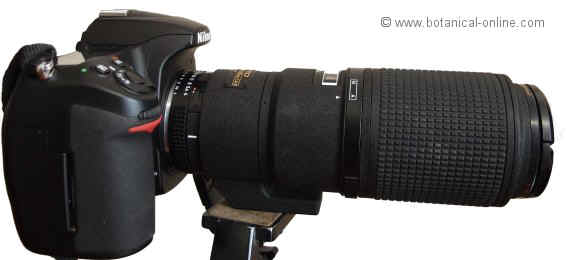
Photo of AF Micro-Nikkor 200mm f/4 D ED with a Nikon D-300
MAIN VIRTUES OF AF MICRO-NIKKOR 200 MM
A good medium telephoto
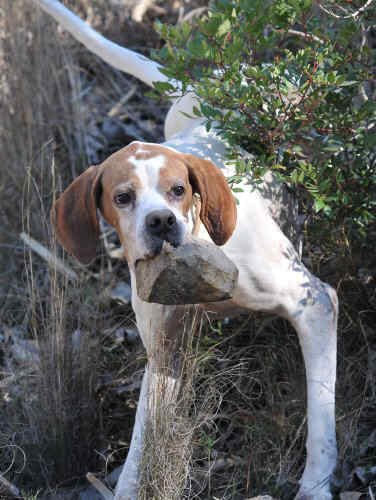
Dog photo. Nikon D-300: f/4.5. ½50s, 250 iso
Used as a medium telephoto lens, it offers a good quality in its maximum aperture. It becomes very good at f/5’6. Between f/5’6 and f/8 it gives the maximum definition. From f/11 diffraction appears to decrease its quality but it can be still usable up to f16.
The lens provides crisp images, with a very discreet vignetting at f/4, which quickly disappears when you stop down to 5/6. Chromatic aberrations are absent and it stands especially for the quality of the blur with a very fine bokeh.
The focus, though not impressive, it is quite fast when using the focus limiter.
An excellent macro telephoto

Photo of butterfly. Nikon D-300: f/6.5. ½50s, 600 Iso
The main qualities of this lens appear when used as a macro lens. Its definition is very good from its maximum aperture, but it reaches its peak closing one or two apertures.
However, what makes it really different from other Nikkor macro lenses is its long focal length which allows us to be quite distant from the subject.
This is especially interesting for macro photography of insects and other creatures that might be disturbed with a shorter focal length less approaching to them.
As for image quality, probably the only lens that comes close to it is the Sigma 150mm F2.8 APO EX DG HSM Macro, but the sigma lens ” only” provides a minimum close-focusing distance of 38 cm. An advantage of 12 cm from the Micro-Nikkor part is something not to disregard when photographing such elusive animals as butterflies, ants, etc.
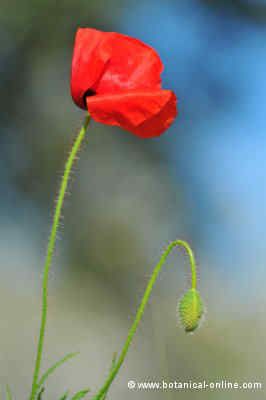
Photo of poppy. Nikon D-300. f/4.2, ½50s, 600 Iso.
AF Micro-Nikkor 200mm provides one of the best bokehs in the market
Besides the ability to maintain a considerable distance to the object, this lens beats all others in its ability to blur the background.
Using it properly, we can get photos with a wonderful impressive bokeh, as we can see in the pictures of the butterfly or the poppy.
AF Micro-Nikkor 200mm for photography of plants
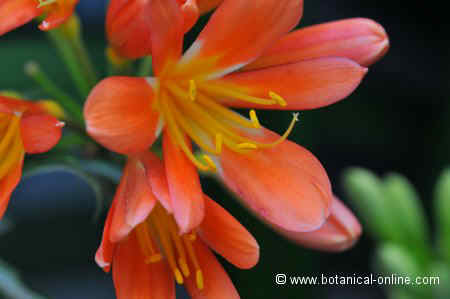
Clivia photo. Nikon D-300. f/5.6. ½50s 600 Iso.
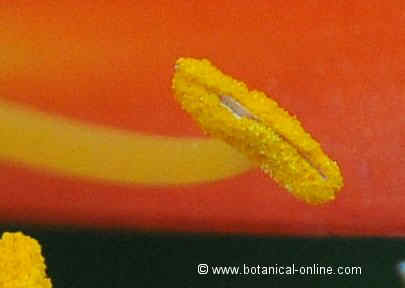
A full detail of a stamen
With regard to botanical photography, the focal length of this target is not absolutely necessary sometimes and not too much practical in many occasions. For this type of photos, we had better use other botanical macro lenses with a shorter focal length and a lower price.
This does not deny the quality of the lens and the fact that you can make stunning photos of plants using this lens without getting too close to them, something which is very advantageous to place ourselves in the most favorable angle or to avoid to hide the necessary light with out body or with the lens itself.
AF Micro-Nikkor 200mm with an excellent quality in construction
The lens has excellent build quality. Its barrel is made of metal and wear-resistant plastics. Focus ring is made of high quality rubber. Lens mount is covered with a sheet of metal that ensures durability.
This lens has two switches: one to control the focus with two positions: AF (autofocus) and MF (manual focus). The other switch is the focus limiter. It is designed to focus easily when using the lens in non-macro function.
AF Micro-Nikkor 200mm with a good tripod ring
There is a specific ring for the tripod which is not removable. It permits to hold the camera very well when fixed to the tripod.
MICRO-NIKKOR LENS AF 200mm f / 4 D ED SHORTCOMINGS
| ||||||||||||||
Among the weak points of this lens, if we can mention any, we can point out the following:
It lacks vibration reduction (VR)
Used as a telephoto lens the absence of vibration reduction can be a negative element in low light conditions, in which case it may be useful to use the tripod.
However, when used as a macro lens, especially at very short distances, the VR may not be necessary, since a manual approach is preferred in this case. In manual focus, the smoothness and ease of focus of this lens is commendable. Only the ring for changing from manual to automatic focus located in the front is not practical at all.
It has no internal focus motor
Focus is done by the camera that should trigger the inner focusing system. Some ” simple” cameras as D40, D40x, D60, D5000 or D5100 can not achieve it, so we have to focus manually when using them. It is necessary to consult the compatibility of this lens with the nikon cameras before buying it. We can assure that D-300 or D-7000 can automatically focus it greatly.
When focusing, it generates a little noise, not very prominent but by no means completely silent.
A high quality lens at a very high price
The price of departure for this lens (about 1500 euros or 1900 $) is a bit high. We also have to mention that the hood is optional and necessary (Photos taken without it lack color and contrast) Paying another 50 € for a hood does not seem too serious when the price of this lens is already so high.
Conclusions
The AF Micro-Nikkor 200mm f / 4 D ED is a highly desirable lens for nature lovers. As a medium telephoto lens it can be very interesting to capture not too small animals. As a macro lens,it is especially striking in the photograph insects.
Given its quality and exclusivity, we find it a very expensive recommended lens.
![]() More information on photography.
More information on photography.

